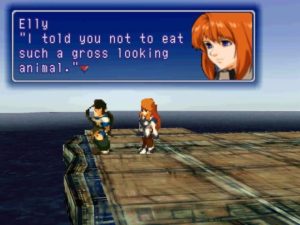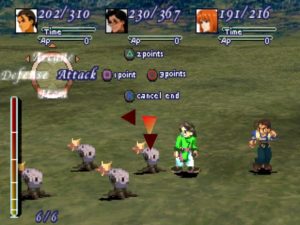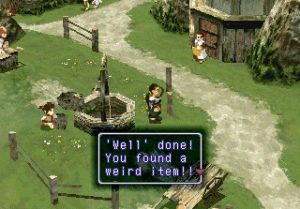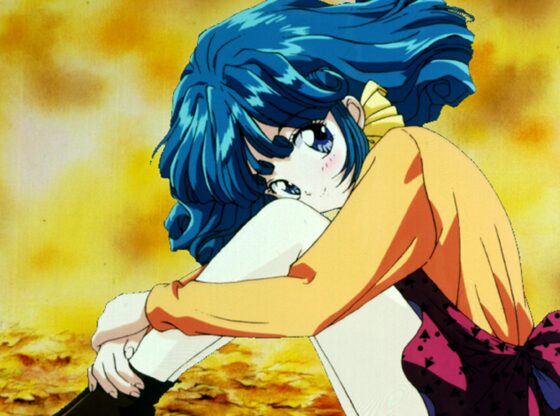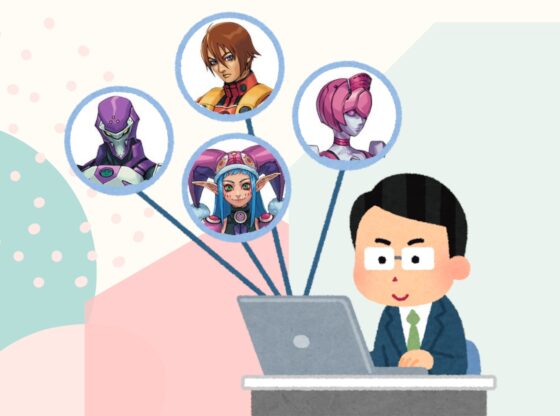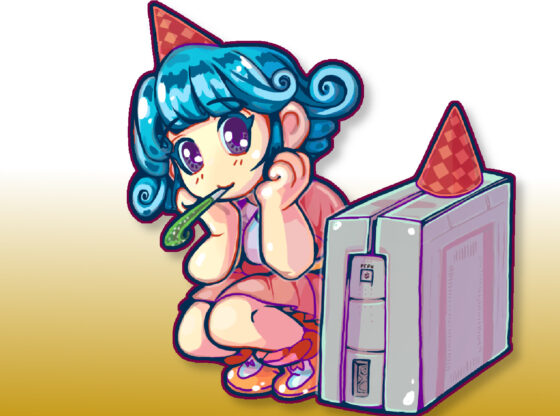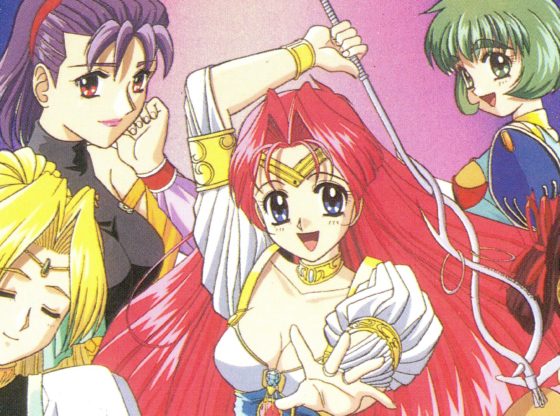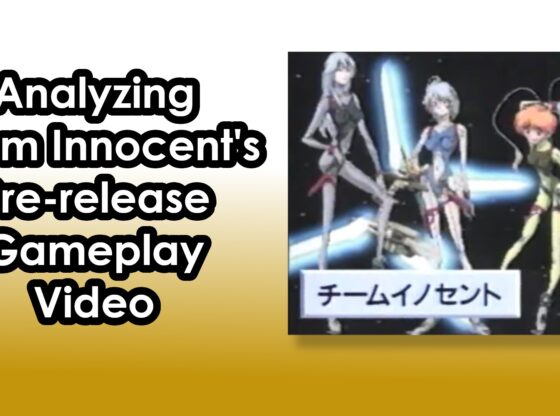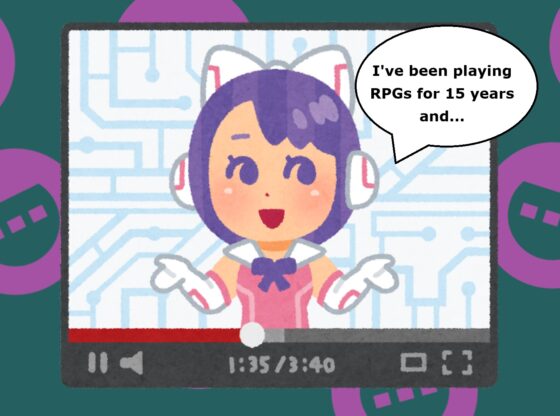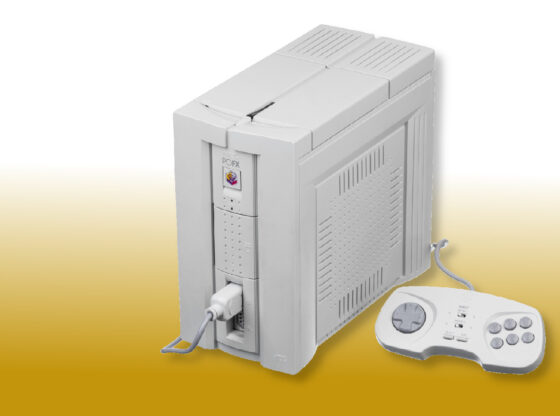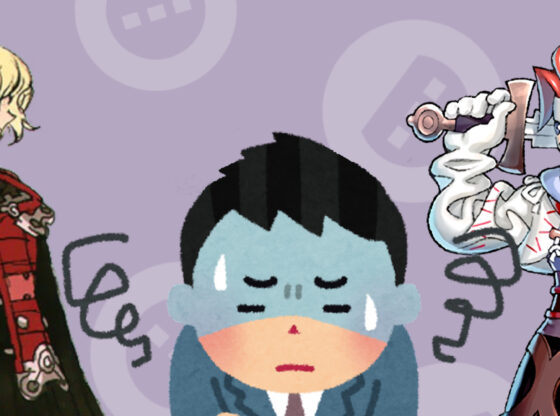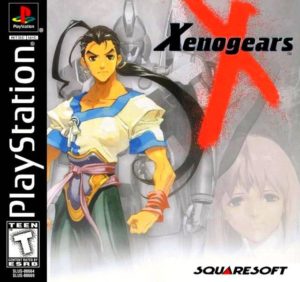
With Monolith Soft being one of my favorite developers of all time, it felt like it was my duty to play Xenogears for the original PlayStation. So when it finally hit PlayStation Network I was excited, bought it basically the first hour it was up… and then shoved it in a corner… Until now! Or, well, until a couple of months ago. After pushing through what is widely considered one of the greatest RPGs of all time, was I impressed?
North America, are you sad? You should be. You’re not getting Xenoblade. What? You’re saying that isn’t The Last Story? Hush you. You want Xenoblade, and you know it. Too bad, you’re not getting it. What North America does have that those silly Europeans don’t is Xenogears! Released in 1998 by Square-Enix, Xenogears was developed by those who eventually moved on to form Monolith Software, the developers of Xenoblade. While these titles have nothing in common outside of the developers and its name, now would the perfect time to talk about the original PlayStation classic.
Story
Xenogears follows the story of Fei Fong Wong, one of the most generic Chinese names ever, who lost all of his memories. In the time after his sudden struck amnesia, he lived peacefully in a village for two full years. Outside the village, the rest of the continent had been in constant warfare for decades. One day the battle spilled into the village itself, as mechanized units started destroying the town. In attempt to protect the only home he knew, Fei Fong Wong accidentally destroys the entire town and kills most of its residence… Good job, man. The surviving citizens banish him. This, of course, sends him on his adventure to, spoilers, save the world.
Right out of the gate, it sounds like your typical generic RPG. To a certain extent, it is. But it takes a much darker look at many themes, specifically at religion. Despite its darker tone, it is able to throw in some-light hearted elements as well, with plenty of creative dialog and some odd situations, like playing as a giant pink bunny fighting alongside a loli riding on a mech’s head to save a town. The story is also supported with not only a large cast of characters, but a strong set as well each with their own strengths and weaknesses to help support each other in the story. Being an RPG, there’s romance, but it is rather light and only becomes a major focus of the plot later in the game. If it ever does start feeling like a bit too much, the title quickly offsets it with some bromance. Fei Fong Wong and his pirate captain friend are basically, like, ‘yeah, you mah bro!’ and ‘aww yeaaah, you mah bro, too’ at each other. Some manly love going on in Xenogears.
The story is handled better than most RPGs… For about forty hours. Once you hit the second disc, the last stretch of the game, everything crumbles. The developers realized they were out of money and time. To solve this, they take the player out of Fei Fong Wong’s shoes and instead have a narrator push players through the story as quickly as possible. Lengthy pieces of text are fitted alongside screenshots to cover hours worth of content within sentences. Dungeons you would have played are simply explained as “we went there, got what we needed, blew everything up and then left.” Occasionally there is the odd dungeon and battle sprinkled throughout, but much of the last stretch of the game is tunneling you threw, not even cutscenes, just text to check off plot points. This quickie approach to the story not only removes gameplay content, but makes what story content is included just flat out confusing. Plot points fly by so fast that you don’t even really realize what is happening. Before you know it, you’re suddenly fighting a boss fight. Why are you fighting this boss fight? You have no idea. It’s just ten hours of mess.
Gameplay
Xenogears actually has a couple of battle systems, both of which are turn based. There are on-foot battles, which has the player simply using a characters to fight. In terms of how these battles play out, like in defense, magic and items, it’s pretty standard. What the on-foot combat does to differentiate itself is by letting players perform combos. Basically, each character has light, medium and hard attacks. Each turn they’re given a certain amount of points to spend to attack an enemy, an amount that rises as the player levels. Mixing and matching attacks generally will give you the same damage results each time, but doing different combos will teach characters Death Blows. These Death Blows are essentially special attacks that can be performed by a player using a specific attack combination. These attacks deal much more damage than the normal combos, but when using Death Blows, the player cannot learn any new, more powerful, Death Blows. So players must balance between trying new combos and using the tried and true high damage combos in more dire situations.
The other battle system involves mechs, or Gears as they’re known in the Xenogears. These pilotable humanoid weapons instead exchange the combo system in favor of chargeable attacks. Players can still do light, medium or heavy hits, but they only attack once. The next turn, the player will have attack power saved up to perform special moves. As you level, you get more special attacks and the ability to save up more attack power for higher level skills. Players also have to be cautious about their actions, because the Gears run off of fuel and are much more limited in terms of healing abilities. If the Gear runs out of fuel, it becomes near useless. If it runs out of health, the Gear becomes completely inactive until the player takes it to a shop to be repaired.
Outside of battle, the game takes place in a full 3D environment, which allows for more exploration than the 32-bit based Final Fantasys with pre-renderd environments. Rather than exploration segments just being a way to get from point A to B, Xenogears includes some light platforming elements. Unfortunately, frustrating camera angles make platforming a bit of a pain. Quite often you’ll find yourself falling down pits as the game doesn’t allow you to jump when a random battle is loading, which quickly amounts to an “oh God, why” as you not only fall back to the beginning of a dungeon but are forced into random battles.
Much like the story, the gameplay is also poorly paced in the last ten hours as you read walls of text and then are suddenly thrown into random battles. Once the battle is over, it’s time to read again. But from a gameplay perspective, there are pacing issues through most of the game. Often the title will throw you in a town with no clue what to do, forcing you to run around until you basically find the next cutscene. The story begins to focus more and more on Gears, which causes later portions of the game to sort of shove hand-to-hand combat to the side. This often creating a moment of confusion once you return to the battle system as you have to resynch yourself back into the battle system, as well as update characters with equipment and search for any new skills and spells learned during the lengthy Gear portions.
Presentation
It’s an impressive looking title for the original PlayStation. There are some effects that are laughable by today’s standards: Having 2D characters sprites in a 3D environment with a panning camera is far from smooth as characters shake in place and have harsh animations between angles. Otherwise, the title looks fantastic given the hardware and great detail was put into the 2D sprites and their animations… As long as that camera stays still. There’s some minor slowdown, but given the nature of the game, it rarely impedes on gameplay.
While the visuals have aged, the soundtrack surely hasn’t as the title has an impressive score. The soundtrack does seem a bit small as many tracks are probably reused a few too many times, but with a quality soundtrack, it’s hard to complain. The title occasionally also uses animated cutscenes to tell the story, which visually have high productions values. There is some horrendous voice acting during these scenes, but they are so few and far between you’ll get over it.
Conclusion
A lot of people say that Xenogears is one of the best RPGs of all time. I’d say it’s simply one of the most ambitious RPGs of its time. (Pffh, only Xenoblade holds the title of best RPG of all time… Maybe.) The plot definitely pushed into some uncharted territory for gaming in the 90s and wasn’t afraid to directly bring up issues of religion back during a time when publishers were still quite weary of blatant references in their titles. Unfortunately, the plot was probably more tailored toward an eighty to one-hundred hour experience, or two games, rather than fifty hours. This causes the last 1/5th of the game to explode into a train wreck. The first forty hours alone are well worth the $9.99 price point when purchasing from PlayStation Network.
For special mention, those who played and enjoyed Xenosaga should definitely pick up the title. While Xenosaga was a re-imagining of Xenogears, sharing many of the same themes, the titles deviate so much from each other that they basically are completely different experiences. For everyone else, it still isn’t hard to recommenced. The unique battle systems and ambitious story well outweigh the pacing issues that come with the title. The finished product may not be the best RPG you pop into your PlayStation 1 or purchase off PSN, but it well exceeds the average label.
Score: 8.5
Pros:
- Varied and unique battle systems
- Ambitious story
- Strong cast of characters
- Top notch presentation on the original PlayStation
Cons:
- Last ten hours runs about as smooth as entering the atmosphere without a seat belt on (because we all know how that feels)
- Story gets a bit confusing thanks to taking the fast lane
- Frustrating camera angles
- Some minor technical issues

